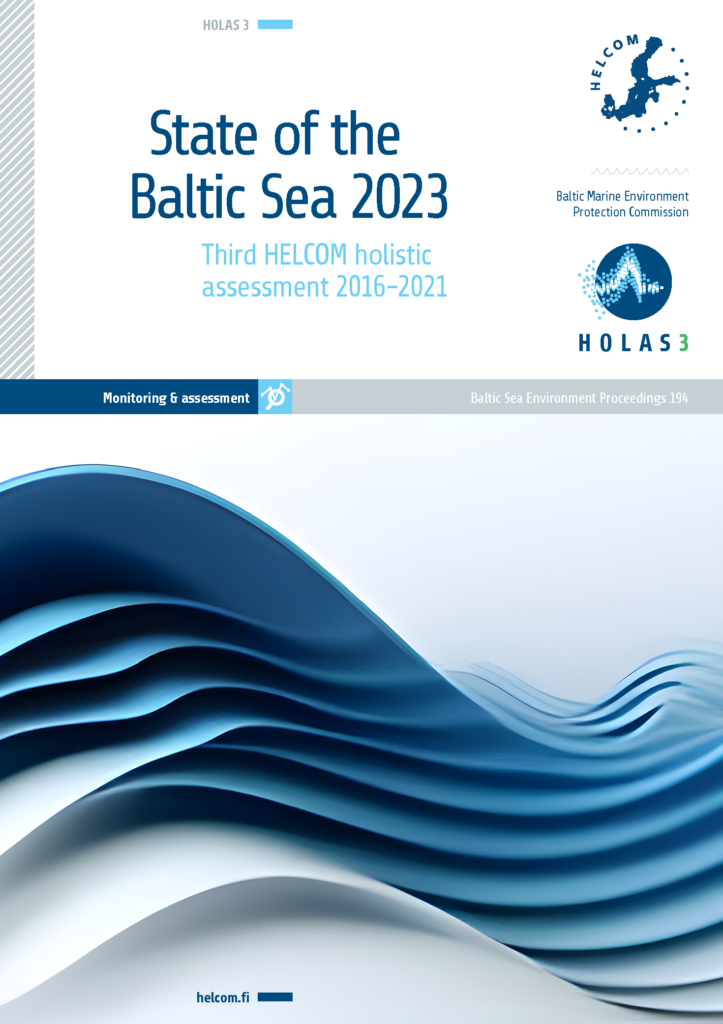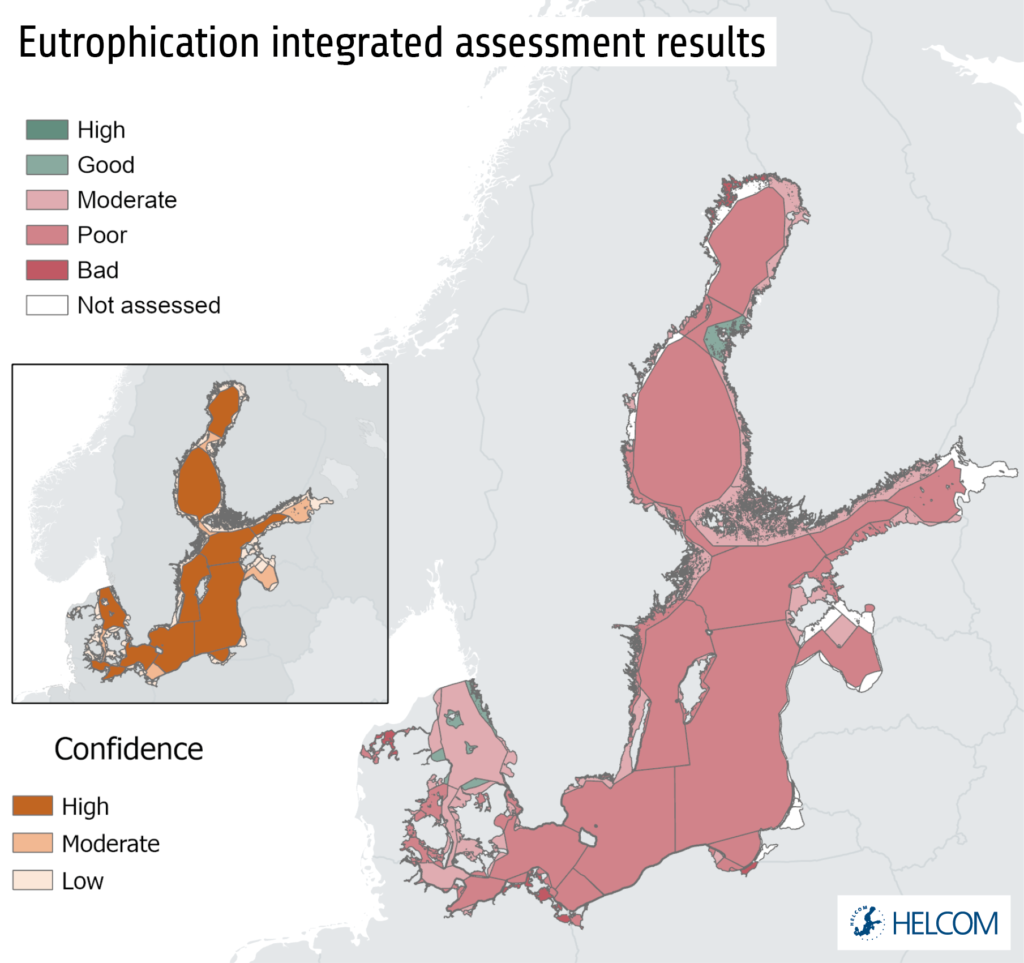EUTROPHICATION
Eutrophication
The integrated assessment of eutrophication status shows that eutrophication is still a major problem in the Baltic Sea (Figure 4.3). There were no clear signs of recovery during 2016- 2021 compared to the previous assessment period. Excess nutrient inputs to the marine environment increases phytoplankton development, which reduces light levels in the water, contributes to depleting oxygen reserves at the bottom, and triggers a series of other ecosystem changes.
Inputs of nutrients to the Baltic Sea have decreased significantly but the target for maximum allowable inputs has not yet been achieved in all basins. For the whole Baltic Sea, the normalized total input of nitrogen was reduced by 12% and phosphorus by 28% between the reference period (1997-2003) and 2020 (HELCOM 2023f).
The maximum allowable input (MAI) target for nitrogen was fulfilled in the Bothnian Bay, Bothnian Sea, Danish Straits and Kattegat. For the Baltic Proper and the Gulf of Finland, the MAI was exceeded, and results for the Gulf of Riga were statistically uncertain. The target for phosphorus was fulfilled in the Bothnian Bay, Bothnian Sea, Danish Straits and Kattegat. In the remaining sub-basins, the MAI was exceeded also for phosphorus.
What is eutrophication?
Eutrophication comes from the excessive input of nutrients into the marine system, leading to an increased supply of organic matter. Primary production by algae, plants and cyanobacteria is a key process at the base of the food web, providing energy for organisms higher in the food web. This primary production depends on the availability of nutrients, in particular nitrogen and phosphorus, but too high nutrient levels enhance primary production beyond what grazers in the food web can consume. Early symptoms of eutrophication are increased concentrations of chlorophyll in the water column and the growth of opportunistic algae. These lead to reduced water clarity and increased deposition of organic material to the seabed, which in turn increases oxygen consumption and may cause oxygen depletion. Long-lasting eutrophication can cause changes in species composition, when species that benefit from eutrophic conditions are favoured directly or through food web interactions, and vice versa.
The Baltic Sea Action Plan states the following ecological objective concerning eutrophication:
- A Baltic Sea unaffected by eutrophication
Countries around the Baltic Sea have a long-term commitment to reduce eutrophication in the Baltic Sea. A central tool is the Maximum Allowable Input, which gives the maximal inputs of waterborne and airborne nitrogen and phosphorus that can be allowed to Baltic Sea sub-basins while still achieving good status in terms of eutrophication.

State of the Baltic Sea 2023 — The third HELCOM holistic assessment (HOLAS 3)
State of the Baltic Sea 2023 is a synthesis report that builds on, and integrates, results from a wide range of assessment products produced within the third HELCOM holistic assessment. Its role is to link information from the underpinning assessment products together, thus highlighting the holistic aspects. With this in mind, the summary report focuses on presenting the results and on an in-depth look at why we are seeing these results, providing over-arching context and analysis. The report helps develop a clearer picture of where we are and how things are connected, supporting coordinated and effective measures to strengthen the Baltic Sea environment.

Thematic assessment
Eutrophication
The thematic assessment report on eutrophication (HELCOM 2023b) describes the changes occurring in the Baltic Sea relating to eutrophication, reflecting both the physicochemical and biological changes in the environment covering the period 2016-2021. The report presents a description of the methods, data and results on nutrient levels, as well as direct and indirect effects of eutrophication.
The current assessment builds upon previous thematic assessments by improving methodologies, expanding the spatial coverage of existing indicators and including new indicators and threshold values for evaluating eutrophication status.


